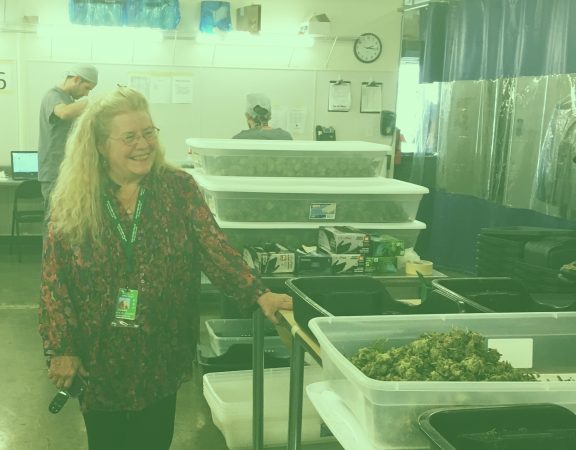Article by Leafly.com
https://www.leafly.com/news/cannabis-101/cannabis-anatomy-the-parts-of-the-plant
When examining a cannabis bud, you’ll notice a complex knotting of different parts: the fiery orange hairs, the sugary crystals, chunky knobs enveloped by tiny leaves. But what exactly are these formations and what functions do they serve?
This brief guide to cannabis anatomy is meant to familiarize you with the plant in its full form. Unfortunately, the sight of real, living cannabis is made rare by restrictive laws, but we hope we can bring you just a little closer to your favorite strain’s source.
Males & Females
Cannabis plants can be male, female, or both (hermaphrodite), but what’s in your stash jar now are the flowers of a female.
Female plants produce the large resin-secreting flowers that are trimmed down to round or pointed buds while males produce smaller spheres near the base of the leaves. The male plants pollinate the females to initiate seed production, but the potent flowers we consume come from the seedless female plants, called sinsemilla, which grow large cannabinoid-rich buds while without seed.
The rare hermaphroditic plants contain both female and male sex organs that allow the plant to pollinate itself during flowering. This self-pollination is typically deemed a nuisance among growers as it spoils the seedless sinsemilla plants and passes on hermaphroditic genes.
Growers can ensure the sex of their plants by growing clones or the genetically identical clippings from a parent strain. Feminized seeds are also made available through a special breeding process.
Cannabis Anatomy
The cannabis plant is comprised of several structures, many of which we can find on any ordinary flowering species. Cannabis grows on long skinny stems with its large, iconic fan leaves extending out from areas called nodes. Cannabis really starts to stand out in her flowers where unique and intricate formations occur.
Cola
Also known as the terminal bud, cola refers to the plant’s “bud site” where tight female flowers bloom. The main cola (sometimes called the apical bud) forms at the very top of the plant, while smaller colas occur along the budding sites below. The number and size of cannabis colas can be increased through a variety of growing techniques like topping, low stress training (LST), and screen of green (ScrOG).
Calyx
To the unknowing eye, cannabis buds just look like a knobby tangle of leaves, but the calyx is what actually comprises the female flower. Look closely underneath those tiny leaves (called “sugar leaves”) and you’ll find those tear-shaped nodules. These are the calyxes, and they come in many different shapes, sizes, and colors. Calyxes typically contain high concentrations of trichomes, or glands that secrete THC and other cannabinoids.
Pistil
Out from the calyxes peek tiny red-orange hairs; these vibrant strands are called pistils, and they serve to collect pollen from males. Pistils begin with a white coloration and progressively darken to yellow, orange, red, and brown over the course of the plant’s maturation. They play an important role in reproduction, but pistils bring very little to the flower’s potency and taste.
Trichome
Despite their minute size, it’s hard to miss the blanket of crystal resin on a cannabis bud. This resin (or “kief” when dry) is secreted through translucent, mushroom-shaped glands on the leaves, stems, and calyxes. Trichomes were originally developed to protect the plant against predators and the elements. These clear bulbous globes ooze aromatic oils called terpenes as well as therapeutic cannabinoids like THC and CBD. The basis of hash production depends on these trichomes and their potent sugar-like resin.





